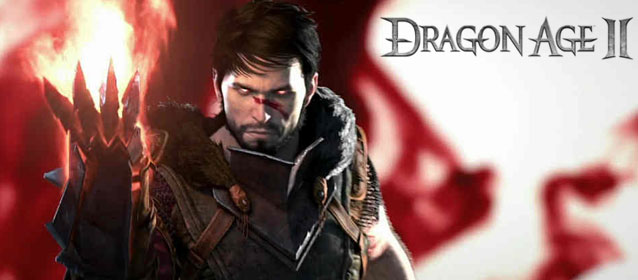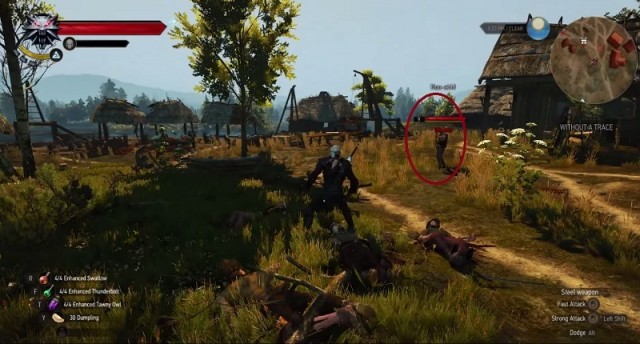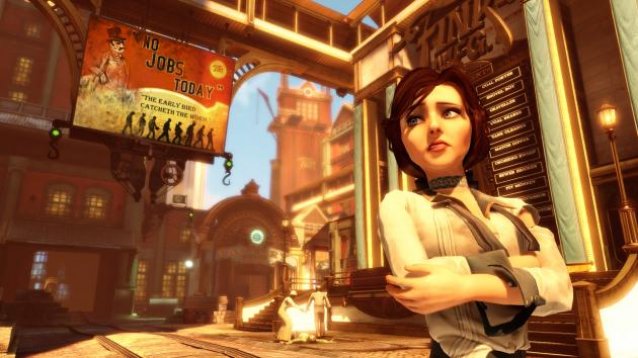

Dante’s Inferno isn’t necessarily the first videogame to be based on a piece of classic literature – but it is the most mainstream title to do so. Published by EA and developed by Visceral Games, the team behind 2008’s fantastically terrifying Dead Space, Dante’s Inferno takes its cues from the epic Dante Alighieri poem, The Divine Comedy, specifically the first chapter, “Inferno”.
Rather than directly re-telling the poem stanza by stanza, Visceral have instead opted for a thematic re-imaging of the source material, using the poems key ideas and imagery to create a very adult character action game.
Players assume the role of fictionalized version of Dante, re-imagined as a veteran of the Christian crusades. After literally staring Death in the face, he returns home to find that his wife, Beatrice, has been brutally murdered. To make matters worse for the chap, Lucifer soon arrives on the scene to drag her soul down to Hell. Doing as any self-respecting hero should, Dante, gives chase, beginning his oh-so bloody quest through the nine circles of Hell. As he descends deeper into the underworld, we begin to learn more about Dante and the sins he has committed in the past – as well as the Lucifer’s true motivations.
The narrative in Dante’s Inferno failed to grab my attention at all, as I sliced and diced my way through hundreds of demons I found myself unable to care why any of it was actually happening. For the majority of my time with game I felt a little confused as to what in the hell (no pun intended) was actually going on.
Admittedly, the story does begin to come together towards the end of the game, but by then I felt it was too little, too late. The actual ending was extremely anti-climactic and unsatisfactory — And it isn’t spoiling anything to say that Visceral make it blatantly obvious that they plan on sending Dante’s Inferno 2 our way.
But enough about the story; chances are if you are reading this you want to know about how the game actually handles. Like any character action game, the hacking and slashing is the crux of the gameplay, and of course Dante’s Inferno isn’t any different. So, did Visceral manage to deliver on that front? You’ll be glad to hear that the answer is a firm “hell yes” (pun intended).
On his quest for Beatrice, Dante will have to face hundreds of demons; fortunately for him he is more than well equipped for the task at hand. He is able to deal out swift melee damage using a massive scythe, or attack at range using Beatrice’s blessed crucifix. In addition to these weapons he also gains access to a few magic attacks as he advances further into Hell.
It is safe to say that Visceral really nailed the combat in the game – yes, the control scheme is extremely similar to God of War or Bayonetta, but hey, if it isn’t broke – don’t fix it right? The only thing I feel is missing from the combat mechanics is the ability to cancel attacks mid-action. Too often I would lose huge chunks from my health bar because Dante was left vulnerable to attack because he was locked into an animation, even though I could clearly see impending threat.
My first impression of the combat was that it was fun and responsive but ultimately simple and restrictive. However, my opinion soon changed once I realized that Visceral had implemented a leveling up system allowing Dante to purchase new attacks and abilities. Once I got my hands on a few of these new techniques the combat really begins to evolve into something a lot deeper than it initially appeared. Soon I was earning enormous chain combos, as I seamlessly dashed from demon to demon dealing out colossal punishment.
The twist in leveling-up is that there are in fact two separate skill trees available, each one representing holy and unholy techniques respectively. Each tree has its own unique skill sets, so you’ll need to decide early on which path you want to go if you have any hope of unlocking Dante’s most powerful attacks. Holy or Unholy points are earned by either punishing or absolving enemies, this is done when an enemy is near death with a simple tap of the right trigger.
Along the way you come across real life historical personalities who need to be punished or absolved. Doing so grants you a large amount of Holy or Unholy Points, depending on which action you took. Punishing is the quicker option of the two, as Dante just brutally rams his scythe into said person’s face, where Absolving requires you to play a sort of rhythm mini-game to earn your Holy points. More often than not I chose to punish the enemies, not because I’m heartless, but because the mini-game wasn’t very engaging and slowed down the action – ultimately too tedious to perform on a regular basis.
Click to continue reading the rest of Game Rant’s Dante’s Inferno review…
Continued:
« 1 2 »




 How to Unlock Return to Sender Achievement in The Witcher 3 DLC Hearts of Stone
How to Unlock Return to Sender Achievement in The Witcher 3 DLC Hearts of Stone The Witcher 3: Wild Hunt Cheat, Tips and Tricks on Story, Combat, Money, Character Development and Travel For PS4/PC/XB1: Updated
The Witcher 3: Wild Hunt Cheat, Tips and Tricks on Story, Combat, Money, Character Development and Travel For PS4/PC/XB1: Updated Infinitely Interesting: An Interview with Bioshock Infinite’s Courtnee Draper Pt. 1
Infinitely Interesting: An Interview with Bioshock Infinite’s Courtnee Draper Pt. 1 Heroes Of The Storm How To Earn Gold Fast
Heroes Of The Storm How To Earn Gold Fast 9 Magical Harry Potter Gadgets You Could Actually Own
9 Magical Harry Potter Gadgets You Could Actually Own